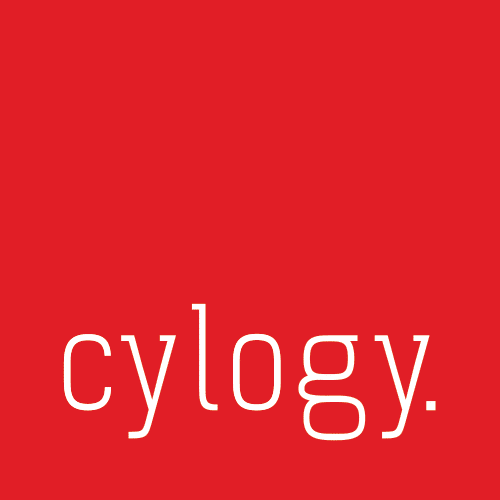The Gist
- Integrations, please. Umbraco launched a new marketplace facility in 2022 to showcase extensions and connectors that enhance Umbraco’s capabilities.
- More releases, the merrier. Umbraco has adopted a regular release cadence, stabilizing the platform and leading to many improvements.
- Headless, here we come. The main Umbraco CMS will provide support for headless when Umbraco 12 is released, offering an alternative to the managed Umbraco Heartcore offering.
Umbraco is a highly flexible open-source Content Management System (CMS) that is both popular with developers, but also with business users, primarily because it is so easy to use. It’s a great platform to work with if you want to deliver rich customer experiences relatively quickly at a reasonable price, but still then be able to grow and evolve your website.
Recently Umbraco has been receiving a lot of attention and evolving to compete with some of the other leading CMSs and Digital Experience Platforms (DXPs), which includes a very recent strategic aquisition to bolster its digital capabilities.
In this post we’re going to look at some of the recent improvements to Umbraco and how this is opening up the CMS to more use from larger organizations.
What Is Umbraco?
At its heart, Umbraco is a CMS rather than being a fully-fledged DXP. However, because it is open-source and has an active developer community, as well as a partner program organized by Umbraco HQ, it has a high number of connectors and extensions. This means it can be extended to embrace a wider range of digital marketing and content management capabilities. Umbraco HQ has also created additional Umbraco offerings to extend the power of the platform.
Umbraco also has a managed, headless publishing CMS called Umbraco Heartcore that comes bundled with a Cloudflare Content Delivery Network (CDN). This makes Umbraco increasingly able to compete with other CMSs and DXPs who are currently stressing their headless credentials, while the number of connectors and extensions effectively means Umbraco Heartcore can be deployed as part of a composable DXP.
Currently, Umbraco is going through a series of improvements, and feels like it has momentum. Some of these are the result of an investment in 2021 from Monterro, a Swedish technology investor with solid experience in the space having previously invested in Episerver (now Optimizely).
Let’s explore some of the recent evolutions at Umbraco.
1. Extending the Value of Umbraco Through the Marketplace
With the current direction of travel for CMSs to support headless publishing and composable architecture, the library of extensions and connectors available are becoming an increasingly important factor in choosing the right CMS. Umbraco launched a new marketplace facility in 2022 to better showcase all the “packages and integrations” available that extend the power and value of Umbraco. These are divided into categories such as “Campaign & Marketing” and “Headless” tools.
Since going live, the marketplace has received some additional improvements to encourage Umbraco partners or community developers to list their offerings. Umbraco HQ is also actively promoting some of the integrations that are listed.
2. Umbraco 11.2 Is the Latest in a Regular Release Cadence
In the past Umbraco had a less predictable roadmap and a wide number of different versions in operation, a situation that was collectively holding it back and potentially limiting adoption, particularly from larger enterprises.
However, since Umbraco 9 is based the platform on .NET 5 (.NET Core) and created easier upgrade paths from previous versions, the platform has stabilized and now focuses on a regular release cadence. This has led to a highly active roadmap with many improvements in the pipeline.
The last major release is Umbraco 11, which was launched in late 2022, and since then 11.1 and 11.2 have already been released. Collectively these have brought significant and minor improvements including the new marketplace already mentioned, as well as full support for .NET 7.
Perhaps the most significant feature for content and marketing teams is a new Block Grid Editor that helps structure content and establish layouts. There have also been some improvements to Umbraco Forms. For developers, the site architecture has also been improved in order to reduce dependencies between different Umbraco features and capabilities.
3. Umbraco Sees the Future as Headless
Headless is a big area for investment for most CMS providers, and Umbraco HQ has continued to invest in its managed Heartcore headless CMS offering; multiple improvements have either been released or on the roadmap including a new REST API based on the OpenAPI standard, optimization for GraphQL queries and more.
However, perhaps the most significant sign that Umbraco sees the future as headless, is that other Umbraco APIs are being upgraded to support headless publishing too. In fact, the main Umbraco CMS should provide support for headless when Umbraco 12 is released in the summer. This will open up headless options for those who don’t want to use the managed (and paid for) Umbraco Heartcore offering, and help Umbraco remain a viable alternative to other CMSs and DXPs.
4. Umbraco Workflow Brings Improvements to Content Management Processes
Umbraco HQ has also released a new add-on for Umbraco 11 which is branded as Umbraco Workflow, although it really is an upgrade of the existing Plumber tool. Umbraco Workflow is a content management workflow, review and approval tool that can be applied to any existing Umbraco site and allows for the creation of individual content workflows to content, prior to publishing.
Umbraco Workflow will be very useful if you manage a high volume of publishers with the need for different reviews, approvals and related analytics. This is very flexible so you can also set up ongoing approval groups, define specific one-off approval workflows for a particular piece of content, and set up multi-stage workflows. You can also set up any desired notifications as well as dashboards to track the progress of content.
5. Umbraco Documentation Gets an Upgrade
Clear technical documentation is critical, particularly for an open-source platform like Umbraco that is undergoing a period of change. In December 2022 Umbraco announced that its technical documentation has been upgraded and improved. It now uses a SaaS platform called GitBook which presents all the information in a structured way, but also integrated with GitHub.
The information has also been completely restructured by product, covering the main Umbraco CMS, Umbraco Cloud, Umbraco Heartcore, Umbraco Forms, Umbraco Deploy and the newly launched Umbraco Workflow. There is also a new search facility to help developers and administrators find what they need.
Conclusion: Opening up Umbraco to Larger Organizations
Collectively, the improvements to Umbraco are making the platform a viable option for larger organizations. The upgrades for APIs and the improved marketplace allows Umbraco to compete on the headless and composable architecture front. The stability of the platform, release cadence and overhauled documentation deliver more of what IT development teams expect from an enterprise CMS.
Meanwhile the new block grid editor released with Umbraco 11 and the support for more complex content workflows, will appeal to digital marketing teams in larger organizations who work with multiple sites and more content creators. Umbraco is a great platform, and it is likely that more organizations will take it up during 2023.



